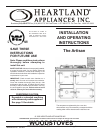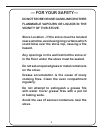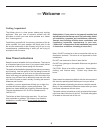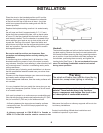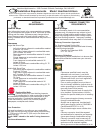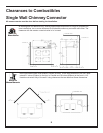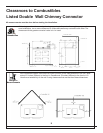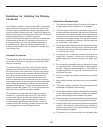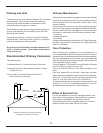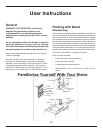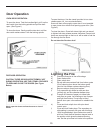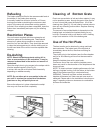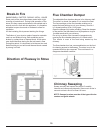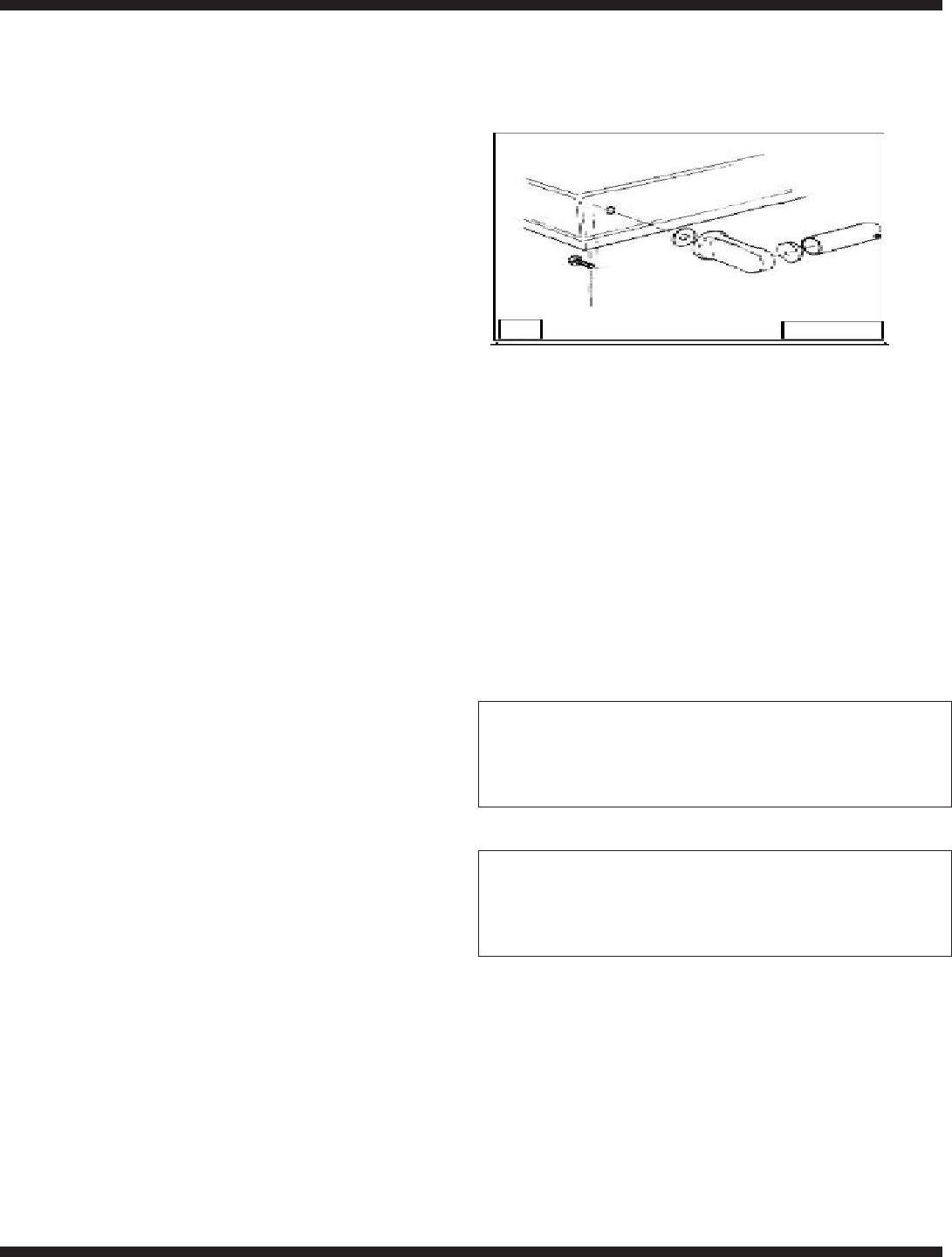
6
Clearances must be maintained to all combustible
material. These include doors, trim, furniture,
drapes, newspapers and clothes. See local codes
for a description of combustible material.
It is very important that you match the stove pipe you are
using to the clearances specied. Failure to do so will result
in an unsafe condition.
Unit must be placed on a continuous non-combustible pad
(oor tile with grouting or sheet metal pad) extending 21" (540
mm) in front and 8" (203 mm) to the sides and back.
Make sure that no oor or chimney supports will be cut due
to chimney installations.
INSTALLATION
Place the stove in the intended position and lift out the
hotplate, checking that the joint between the underside
of the hob and the top of the stove is intact. Any joints
which have opened should be made good with the re
cement provided.
Replace the hotplate making sure that it is seated evenly
on
the soft rope and that it is approximately 0.1" (1.5 mm)
higher then the enamelled top plate, with an equal space
all round. Fit the ue chamber which should have a rope
seal already installed. The ue chamber is screwed to the
stove making a good seal as any air leak at this point will
impede the working of the stove. Open the rebox and
ashpit doors and check that the reciprocating bottom grate
bars are in position. Operate the riddling lever to ensure
bottomgrate operation.
Be sure to read the sections on clearances, oor
protection and chimneys before actively starting the
installation.
A woodburning stove radiates heat in all directions. Heat
directed toward living areas in front of the stove is usually
very welcome. However, heat radiating in other directions will
not be as welcome if it results in overheating nearby walls,
ceilings and oors.
An important part of planning a safe installation is to be sure
that the combustible material located near your stove does
not overheat.
Clearance is the distance between your stove and stovepipe
and nearby walls, ceilings and oors.
If there is adequate clearance, then the nearby surfaces will
not overheat.
Handrail:
The handrail brackets are held on the front ends of the stove
top-plate casting. Remove the travel nuts and replace with
the handrail brackets ensuring the bre protecting washers
are in position. Insert the handrails with tted endcaps into
the brackets, positioning them correctly, and tighten the
locating bolts (See Figure 1). Do not use handrail to move
stove. Do not hang combustible material on handrail
during stove operation.
Warning
The ashpit and rebox door must be closed during
normal use, except when lighting or refueling.
Contact local building ofcials about restrictions and
installation inspection in your area.
Air owing between the stove pipe and nearby surfaces
carries away heat. Do not ll the empty space with any
insulating material.
A chimney approved to CSA B.365-01 in Canada or
NFPA 211 in the USA must be used to connect to the
Fig.1



